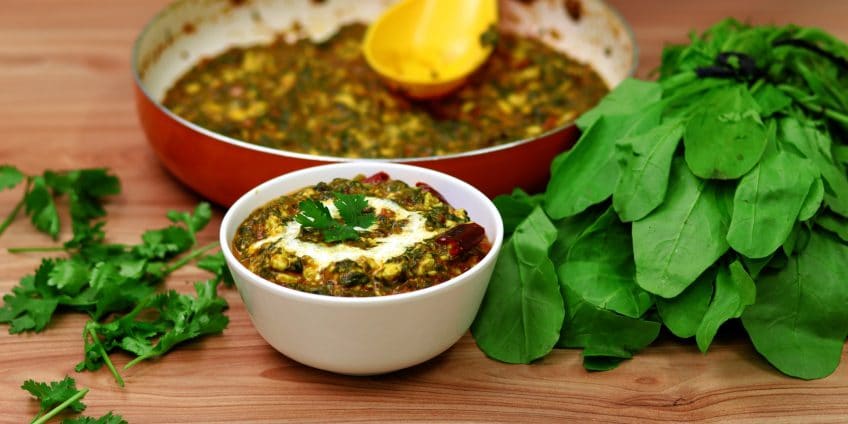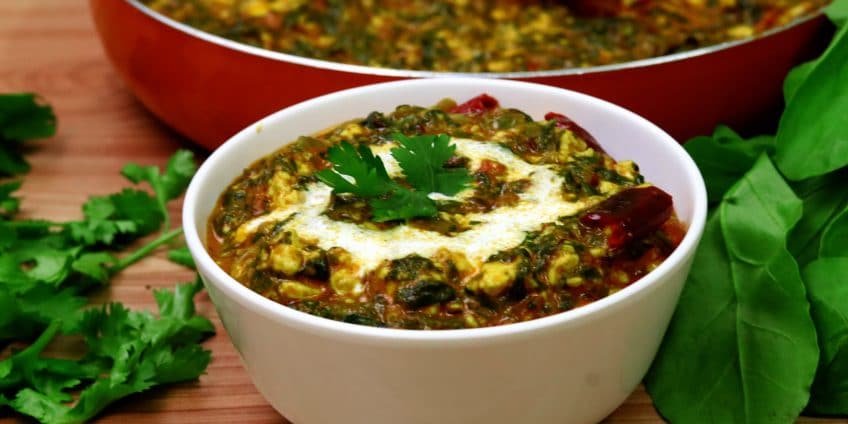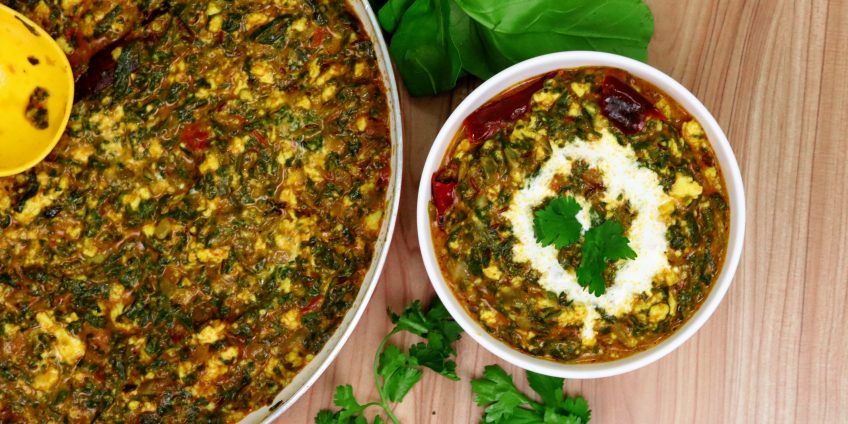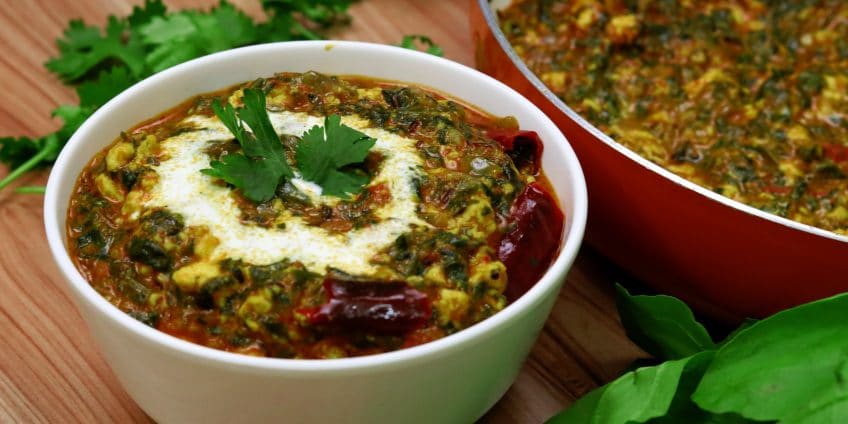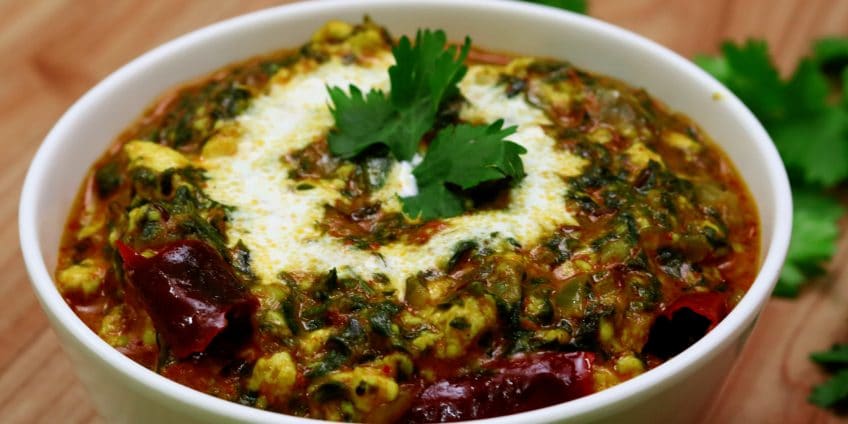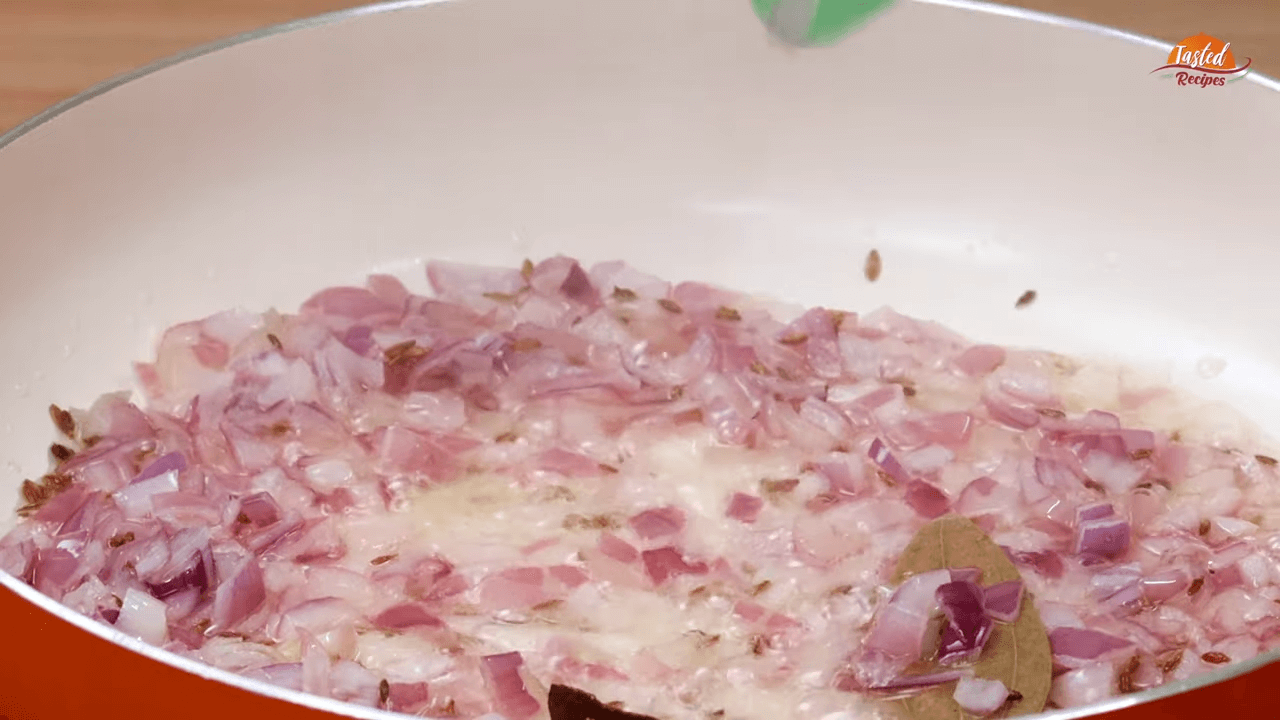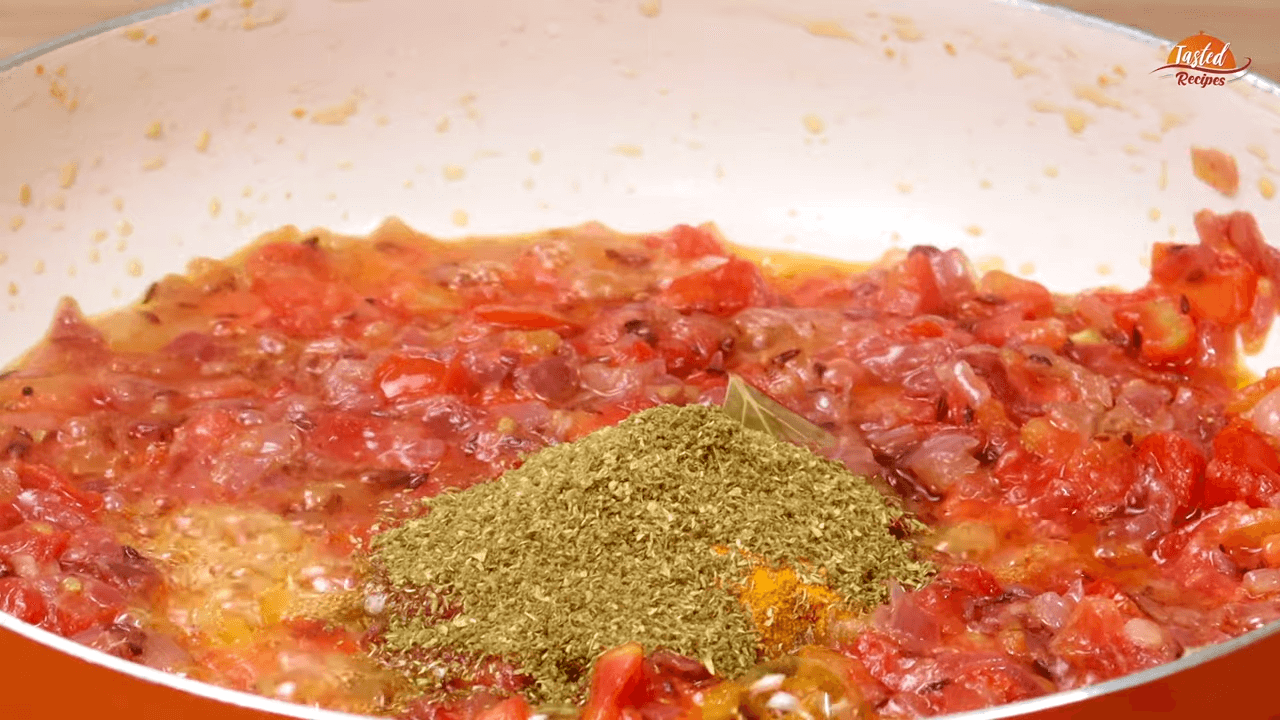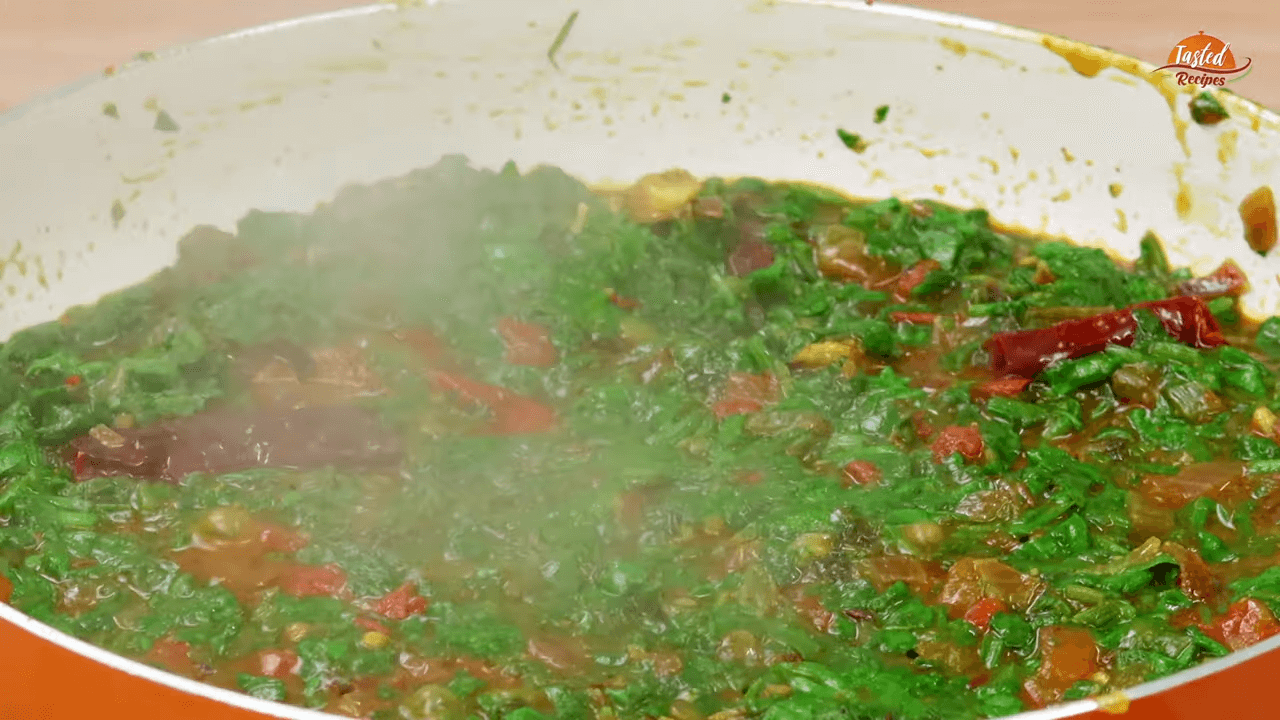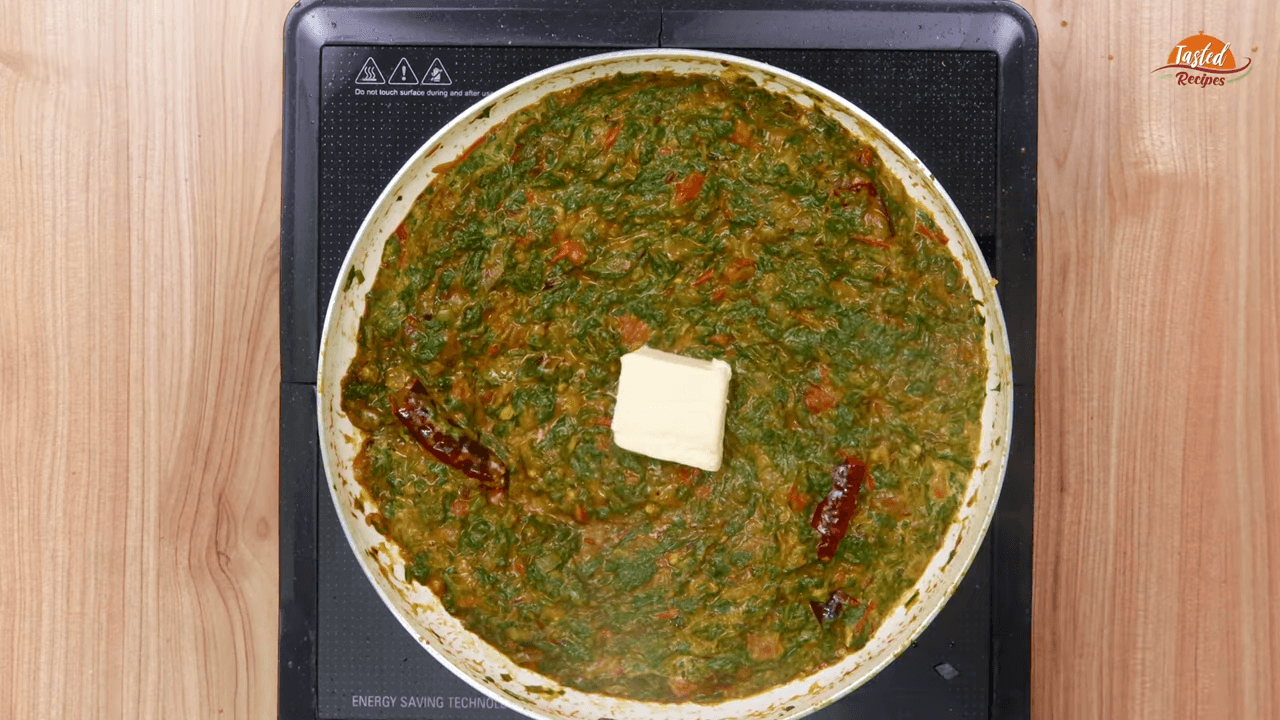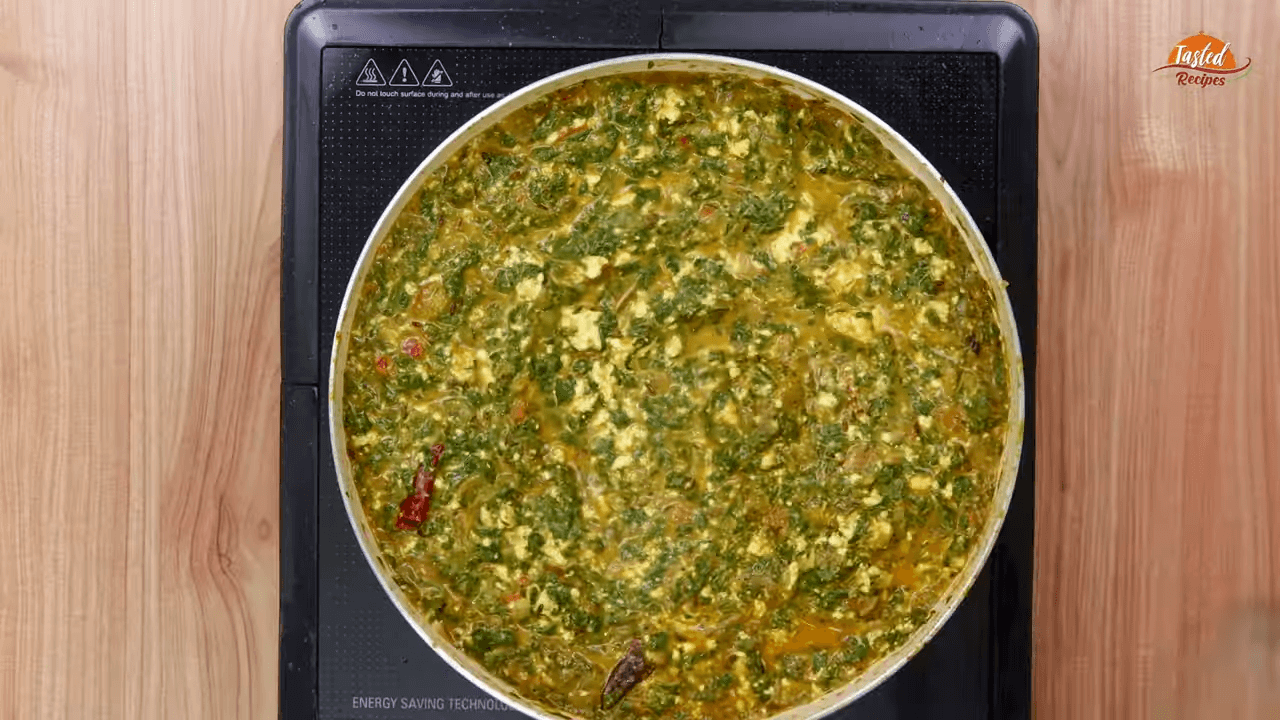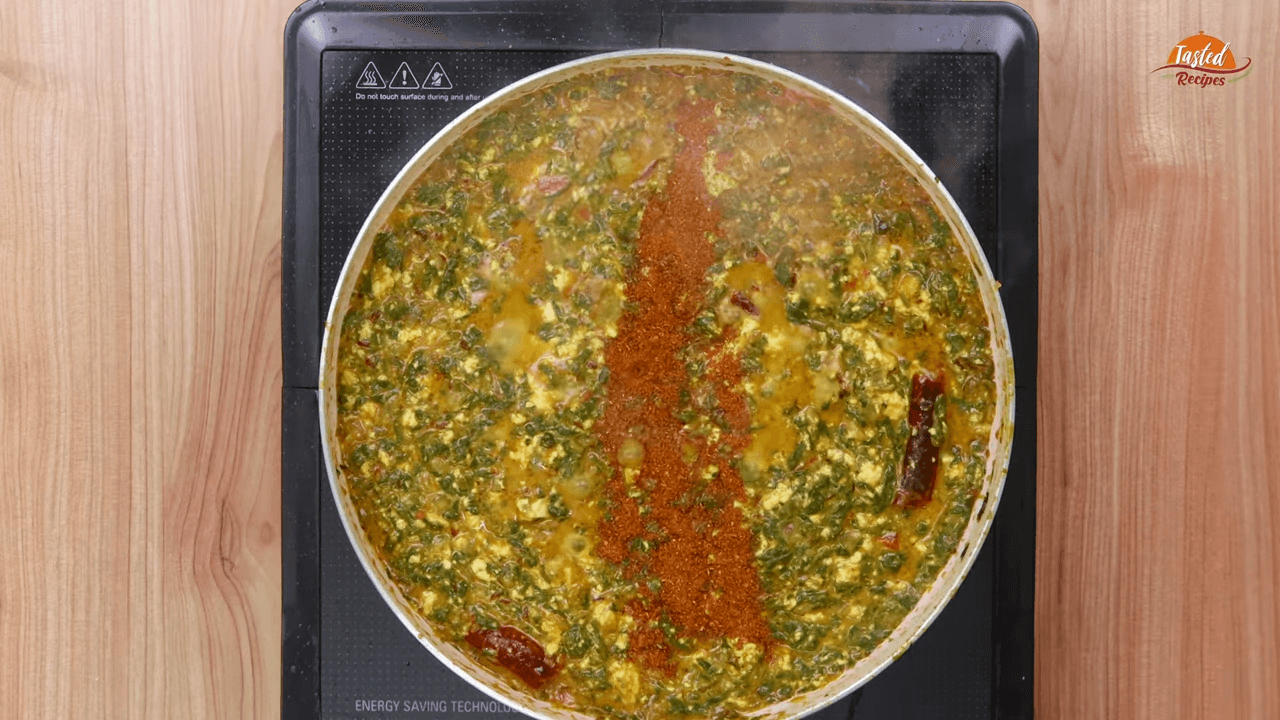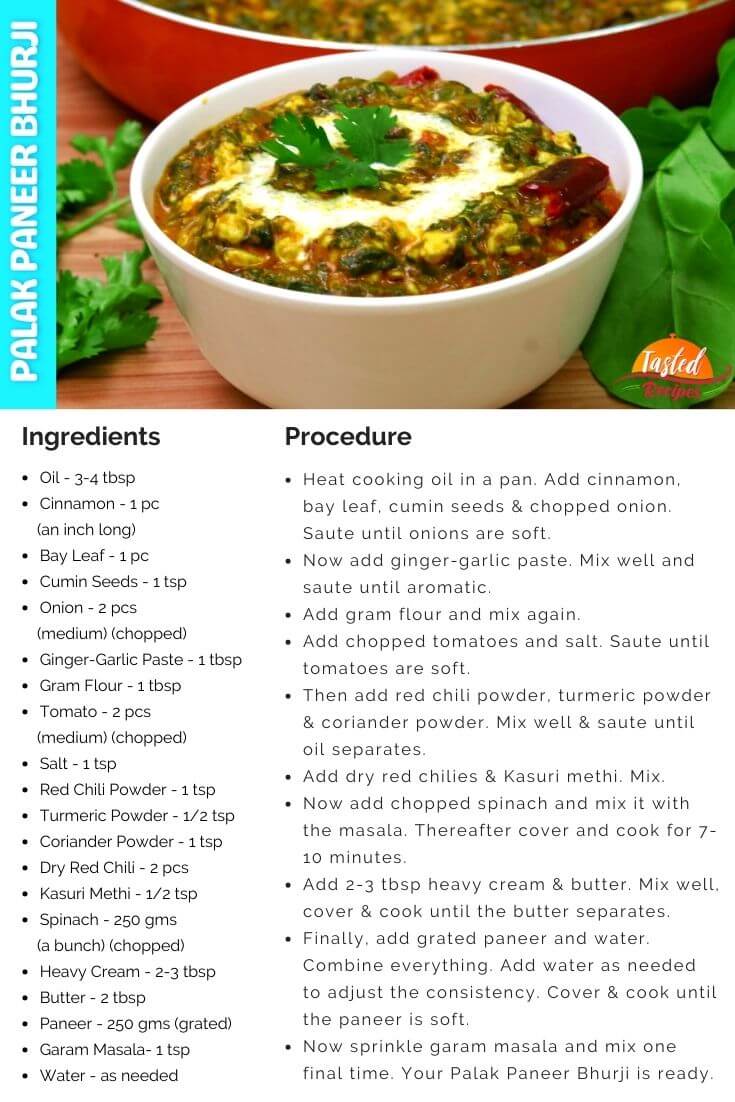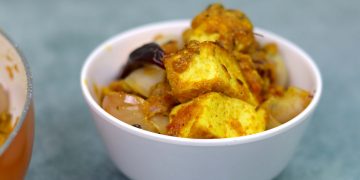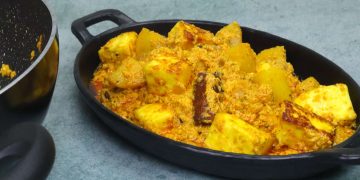Palak Paneer Bhurji is a combination of two different recipes. For instance, palak paneer and paneer bhurji. In other words, we have palak and paneer cooked in bhurji style. When you crumble the paneer, you get the traditional bhurji texture. We mainly do the same in the egg bhurji recipe. However, we don’t crumble eggs; instead, we mash the egg mixture.
Okay, now back to the recipe.
Bhurji recipes are my personal favourites because they are easy to make. Period. Apart from the hassle-free making process, bhurji are tiffin-friendly. Since there’s no gravy, the risk of spilling off the tiffin is almost zero. That’s the reason why I am calling it a tiffin recipe.
The Base of the Palak Paneer Bhurji
Chopped onion and tomatoes form the basic structure of the masala. Additionally, we have whole spices and powdered masala to add the required flavour plus aroma. The only condition here is to saute the mixture until the oil separates. The term until oil separates quite popular in Indian kitchens.
When the oil separates, the masala and other ingredients are thoroughly cooked. Moreover, it also indicates that it is time to turn off the flame or continue adding other items. Hence, keep this thing in mind.
Spinach aka Palak
This leafy vegetable needs no introduction. There are hundreds of spinach recipes dominating the Indian cuisines and Indian cookbooks. The deal here is to procure fresh and green spinach leaves. Anything below this is simply useless. Make sure the leaves aren’t pale yellow. To remove the dirt and germs, wash them under running water.
One more thing you can do is dip the spinach leaves in lukewarm water to remove the germs. Blanching is not required. Besides, if you prefer blanching, then go ahead, or else even dipping them in lukewarm water will serve the purpose.
Drain the water using a strainer and dry the leaves. Do this before you start the cooking. Meanwhile, your spinach leaves will completely dry.
Homemade Paneer or Packaged?
Ideally, both of them are fine. There’s no problem using packaged paneer, provided it is fresh and soft – for example, Amul or Sumul brands paneer. What I suggest is making paneer at home, aka homemade paneer.
It’s pretty easy to make paneer at home.
You get a good yield if you make paneer at home. For example, one-litre full-fat buffalo milk gives you 225-250 grams of paneer. On the contrary, cow milk yields only 200 gms of paneer out of 1-litre milk. Sometimes it is even lesser than 200 gms.
Therefore I suggest not using cow milk but going for full-fat buffalo milk. I have two different homemade paneer recipes, viz masala paneer & black pepper paneer. Click respective links to watch the video and recipe post.
So, we have widely discussed the core elements of palak paneer bhurji. Now let’s move on to some helpful tips.
Palak Paneer Bhurji Extra Shots
These small tips below will help you get things done in a better way. Hence, go through them once.
Unsalted Butter
Although I have cooked the masala of this recipe in cooking oil, you can always swap it with plain unsalted butter. Doing this will integrate a smooth taste & texture into the final dish.
Whole Spice & Garam Masala
I have added 1 tsp garam masala, although there are five whole spices. The reason behind doing this is to compensate the recipe with the remaining flavours of other whole spices—for instance, cinnamon, poppy seeds, black pepper, cardamom, etc. However, you can replace garam masala with other spicy powders like achari masala, kolhapuri masala, kadhai masala, etc.
Heavy Cream
Paneer recipes go hand in hand with cooking cream. In short, your palak paneer bhurji will be a gourmet of butter & heavy cream. If you are calorie conscious, add cream & butter as per your need. But don’t skip them.
Gram Flour aka Besan
First, don’t substitute besan with other items. Second, it is imperative to cook besan to eliminate the raw taste. If it isn’t cooked correctly, the flavour of the gram flour will easily overpower other flavours. Hence, follow this tip.
Palak Paneer Bhurji FAQs
Here are a few queries about the palak paneer bhurji recipe.
Can I saute all the whole spices first in oil or butter?
Yes, you can do that. Take care that whole spices don’t burn. Keep flame low while sauteeing them. The smokey taste & flavour will get into the final dish if you burn them, making it hard to remove.
Why are we using Kasuri methi?
Dry Kasuri methi has a strong flavour and aroma. For these two reasons, we are using it in our palak paneer bhurji. However, be careful with the quantity because it can ruin the overall taste if added more.
Do I need to grate paneer or crumble it?
If you are making traditional bhurji recipes, then crumbling paneer is adviseable. On the contrary, if you grate paneer, there won’t be large chunks of paneer visible. For bhurji, we need small, medium and large uneven paneer pieces. Therefore, do not grate paneer.
How does sprinkling garam masala at the end instead of cooking it with other masalas make a difference?
Sprinkling garam masala at the end is a typical restaurant style of cooking. Once you add the garam masala powder, do not cook. Instead, please turn off the flame, cover the lid and allow it to rest for a couple of minutes. You will love the raw aroma & taste of spices.
Why didn’t you add water to cook spinach?
Spinach is a leafy vegetable containing enough water. Therefore, the leaves will release water and cook the spinach in the same water. Moreover, we need to dry out the water content while cooking. Hence, we don’t need additional water to cook the spinach.
The palak paneer bhurji recipe concludes here. If you have any doubts, then get in touch via comments. Let me know how was your experience with making this recipe. See you in the following recipe.
